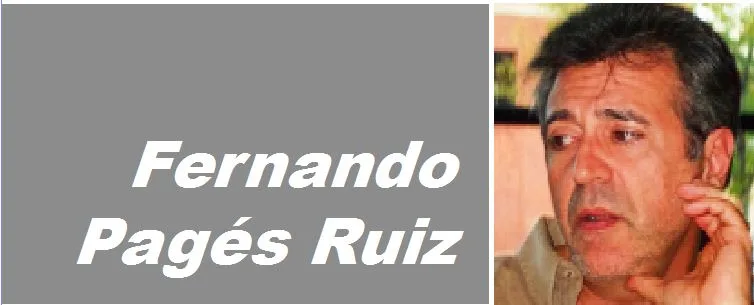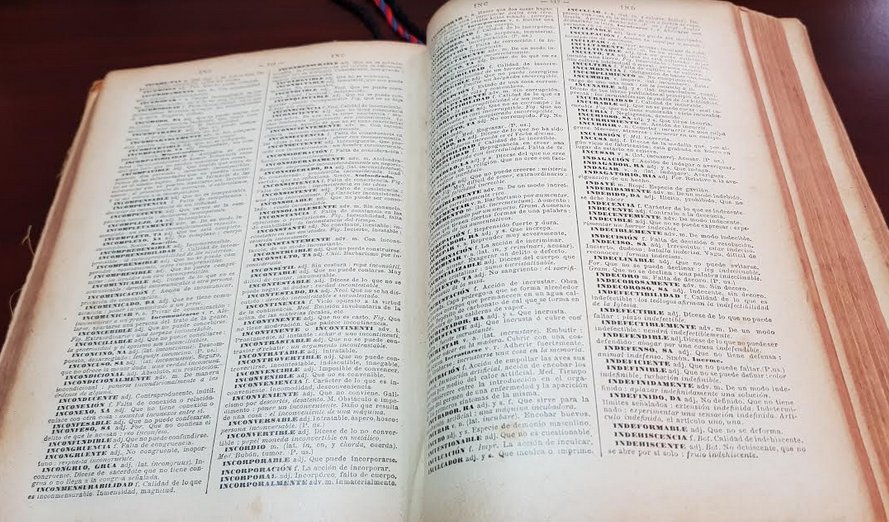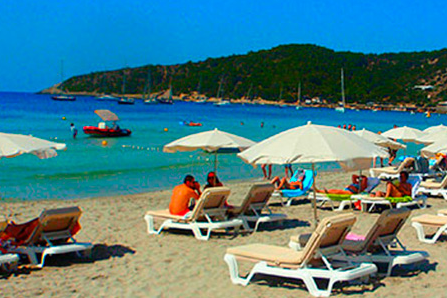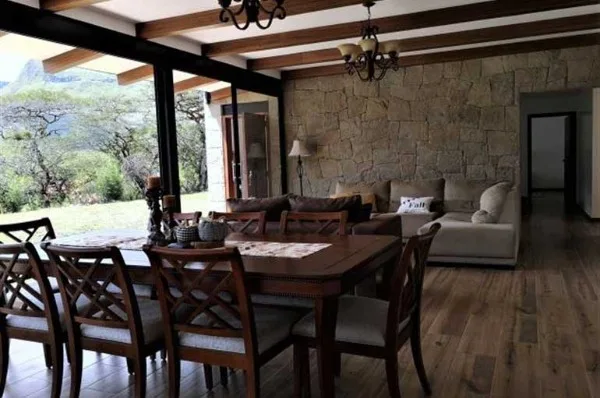Balmy winters, leafy legumes, coastal monkeys and other linguistic ambiguities in Ecuador
An English speaker has much to learn about the Spanish language when moving to Ecuador. But the foreign native Spanish speaker does, too.
Case in point: I moved here from Argentina, and although I’m fluent, the local language still threw up a few trip hazards. For example, the word winter, or invierno. Folks here equate winter with the hottest season, when busloads of folks from Cuenca and Guayaquil take refuge at the beach.
or invierno. Folks here equate winter with the hottest season, when busloads of folks from Cuenca and Guayaquil take refuge at the beach.
This seasonal conundrum confused me for several months. In Argentina, as in your North America, winter, or invierno is the worst season for the beach unless you’re a polar bear. It was so confusing, I questioned my knowledge of Spanish, and thought maybe invierno had something to do with a seasonal inversion, and hence the rains that typically occurs in the thick of summer. Not so.
I pulled my trusted Pequeno Larousse Ilustrado, off the shelf — it’s the Merriam-Webster of the Spanish language, and I looked up Invierno, the definition read: “Coldest season of the year, which begins in Europe and North America on the 22nd of December and end on the 21st of March, which in South America corresponds to the summer months. Except in Ecuador, where it’s the rainy season.”

My beloved Pequeno Larousse ilustrado, the Miriam-Webster’s of the Spanish language.
So, a special definition of winter just for Ecuador.
But why would only Ecuadorians call the hot, steamy rainy season winter? When I asked them, they looked perplexed, as if I were an ignorant fool asking the most obvious questions—of course, it’s hot in winter! So, seeking a logical explanation, I looked into the etymology of invierno, only to discover it comes from the Sanskrit हिम, or himá that means ice, as in the Spanish hielo, or more generally, bitter cold.
My Ecuadorian lawyers (I have three) couldn’t help me. They thought it made perfect sense to call the sweltering weather winter, so long it rains.I turned to Google, which confused things even more, with Wikipedia stating that, in Ecuador, “There are only two seasons: dry and wet. The dry season (winter) runs from June to September and the wet season (summer) is from October to May.” Precisely the opposite of what locals tell me!

Crowded beaches mean it must be winter in Ecuador.
Another website says that, “Winter goes from October through May and usually brings with it warmer temperatures, rain showers, and higher humidity.” Confusing? Yup. The website Ecuador.com seems to explain it best: “Ecuador seasons are defined more by rainfall than by temperature. A warm rainy season lasts from January to April, and May through December is characterized by a cooler, drier period that is ideally timed for a summer trip.”
I found a reference in an Ecuador government website the reads as follows:
Due to its location on the equatorial line, the country has a tropical climate divided by two seasons:
- Wet-called erroneously winter — lasting from 4 to 5 months and goes from January to April/May.
- Dry-called erroneously summer — lasting from 7 to 8 months and goes from May or June to December.
In summary, Ecuadorian summers are chilly and dry. Winter, sweltering and wet. It’s one of those things, like spelling “to, two and too” in English, meant to be memorized, and certainly not understood.
Legumes or Vegetables?

In Ecuador, all veggies are legumbres.
The first time I went looking for spinach at Supermaxi, I asked the clerk where I could find it. He directed me toward the “legumbres” lane. Indeed, I found an aisle prominently labeled “legumbres” or legumes, where along with the spinach I saw was lettuce, tomatoes, broccoli and all kinds of, well… vegetables.
Realizing locals called their vegetables “legumes,” I asked my learned friends, why? They were no help, nobody had ever questioned it. Consulting the Larousse dictionary again, I confirmed what I know: “Legumbres: Any fruit or seed that develops in a seed pod. Examples include green beans and sweet peas.”
Once again, Google didn’t help, but I found a lively discussion group, where folks from different countries argued about what’s proper, including calling all vegetables “tubers” in Venezuela, and accusing the synonymous use of legumes for vegetables as “Spanglish,” and with some advocating calling all vegetables and fruits, verduras, or “greens”.

Seco de chivo in Ecuador is anything but seco.
Drilling down further, I found several more discussion groups, where general agreement states that the scientifically accurate term for vegetables is, well vegetables. But that we all get a little confused, and it’s no big deal, whether they call spinach a legume in Ecuador, or tomatoes as a vegetable in the United States — tomatoes are fruits.
Why do they call a brothy goat stew seco (dry)?
I like roasted meat dishes, such as the cecina served in Loja, or the thinly sliced carne asada of Méjico. When I ordered “seco de chivo” for my first lunch in Ecuador, I assume I’d get a nice dry roast goat. You see, the Spanish word “seco” means dry, and chivo is goat. When the descriptive seco is applied to meat of any kind it evokes images of jerky. Yet the “seco” they served me for lunch resembled a brothy soup called guiso, in Spanish, akin to the Mexican caldo de res.
Fortunately, this Ecuadorian linguistic enigma has an interesting explanation, and my lawyer was able to enlighten me. He told me of how the English, who came to exploit petroleum reserves under Ancon, in the province of Santa Elena, during early 20th Century, began to call the brothy regional meat stew the “second plate,” or entree, since Ecuadorians always served it after the soup, along with plenty of rice to soak up the juices.
The locals began to call the goat stew, originally known as “cabrito” el “second,” eventually shortening it to just “seco”. I was able to corroborate this explanation in a story published in the newspaper El Comercio.
Why are folks from Guayaquil called Monkeys?
My first days in Ecuador were spent in Cuenca; then I took the white-knuckled minibus ride to Guayaquil. During the three harrowing hours tipping through Cajas, I got to mix it up with the locals, asking questions about their country. The query that got the most engagement came when I ask, “What’s the most dangerous animal in Ecuador?” The reply came almost unanimously and simultaneously from the mouths of my fellow passengers, “¡Los monos!” they shouted, “The monkeys!”

In October of 2011, the mayor of Guayaquil, Jaime Nebot, inaugurated the sculpture honoring the now extinct monchín monkey of Guayaquil, located on Avenida Juan Xavier Marcos and Aguirre. The work was designed by the Imbaburian sculptor, Juan Sánchez.
I took them seriously, which delighted my new friends, who giggled and snorted at my naivete. Eventually I realized they were using the term as a slur against the people of Guayaquil. I got several explanations of why they were called monkeys, such as, “They are all thieves, just like monkeys,” and “They are always seeking novelty, just like monkeys.” None of which I found true, as I got to know many Guayaquileños in the months to come. Still, the curiosity remained. Why monkeys?
Here my lawyer provided an explanation, which I was able to validate with a local historian. The primate machín (capuchin en inglés) once lived in abundance in the native hardwood forests of Guayas. The machín represents an important cultural symbol, akin to the wily cayote of native North American lore. Stories of the founding of Guayaquil include the monkey machín and his friend the owl called Juan. You can find the pair in sculpture at Parque Centenario in Sanborondón, the tony neighborhood outside Guayaquil.
You can also find a 12-meter-tall sculpture of the mono manchín in northeast Guayaquil, at the entry to the tunnels burrowing under the hills of Santa Ana and El Carmen. The ancient abundance of this mischievous and celebrated monkey caused people in the sierras, or highlands, to say they were going “to the place of the monkeys” when traveling to Guayaquil. Not because of the people, but the primate.





















